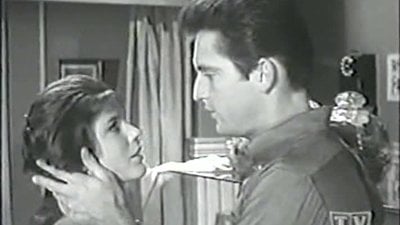The Dividing Wall, the ninth episode of season two of Alfred Hitchcock Hour, presents a gripping tale that delves into themes of isolation, rivalry, and the complexities of human relationships. Set against the backdrop of two adjacent homes, the story artfully explores the tensions that can arise from physical and emotional barriers, intertwining the lives of its characters in a suspenseful narrative.
The episode revolves around the lives of two families who share a common boundary — a literal wall dividing their properties. This wall symbolizes more than just a physical separation; it serves as a broader metaphor for the barriers that individuals create to shield themselves from the outside world. The initial premise establishes a seemingly harmless neighborhood, but as the narrative unfolds, it reveals deeper underlying conflicts and long-buried animosities.
Characterization plays a crucial role in The Dividing Wall, with the inhabitants of each household portrayed in rich detail, allowing viewers to become emotionally invested in their stories. As we meet the residents, their distinct personalities and quirks emerge, laying the groundwork for the inevitable clash that looms ahead. Each character grapples with personal struggles and hidden desires that are exacerbated by their close proximity to one another. These intricacies of their lives are masterfully woven together, illustrating how the mundane aspects of daily life can quickly spiral into a fray of tension and animosity.
The pacing of the episode is deliberate, creating a palpable sense of suspense as the viewer anticipates the consequences of the simmering conflict. The gradual build-up enhances the experience, allowing viewers to gain insight into the intricacies of the relationships at play while also keeping them on the edge of their seats with a variety of twists and turns. Hitchcock's signature touch is evident throughout, as he expertly utilizes elements of dark humor and irony, juxtaposing moments of levity with the overarching tension of impending confrontation.
As the episode progresses, the theme of perception versus reality comes into sharper focus. The characters' assumptions about one another, shaped by their experiences and biases, color their interactions in profound ways, leading to misunderstandings and misinterpretations. This aspect of the narrative encourages viewers to reflect on the often complex nature of human dynamics, particularly how easily miscommunication can escalate into conflict.
The visual storytelling is equally compelling, with cinematography that emphasizes the suffocating nature of the dividing wall itself. Shadows cast by the barrier loom large, creating a physical representation of the psychological struggles the characters face. The set design and lighting choices reinforce a sense of confinement, drawing the audience into the emotional landscape of the story. The wall, as a central symbol, takes on a life of its own, representing both the barriers people build around themselves and the potential for those barriers to be torn down.
Throughout The Dividing Wall, Hitchcock employs various filmmaking techniques that heighten the sense of unease and anticipation. The judicious use of camera angles, close-ups, and sound design all contribute to the atmosphere, with moments of silence punctuated by sudden bursts of dialogue that further amplify the tension. These technical elements combined with the compelling narrative create an immersive experience, inviting the viewer to engage with the unfolding drama on a deeper level.
In true Hitchcockian fashion, the episode culminates in a finale that challenges both the characters and the audience to confront uncomfortable truths about themselves and one another. The resolution of the conflict is shaped not only by external events but also by the internal transformations that the characters undergo as they grapple with their emotions and motivations.
The Dividing Wall encapsulates the essence of Alfred Hitchcock Hour, blending psychological complexity with thrilling storytelling. The episode serves as a thought-provoking exploration of the human condition, prompting viewers to consider how easily relationships can be tested, and how the very things that divide us can also offer opportunities for connection and understanding. It is a testament to Hitchcock's mastery of suspense and storytelling, leaving a lasting impression long after the final credits roll.
-
Genres
-
CastAlfred HitchcockJames GregoryChris RobinsonJames GregoryChris Robinson
-
Channel
-
First AiredDecember 6, 1963
-
LanguageEnglish
-
IMDB Rating6.9 (313)

